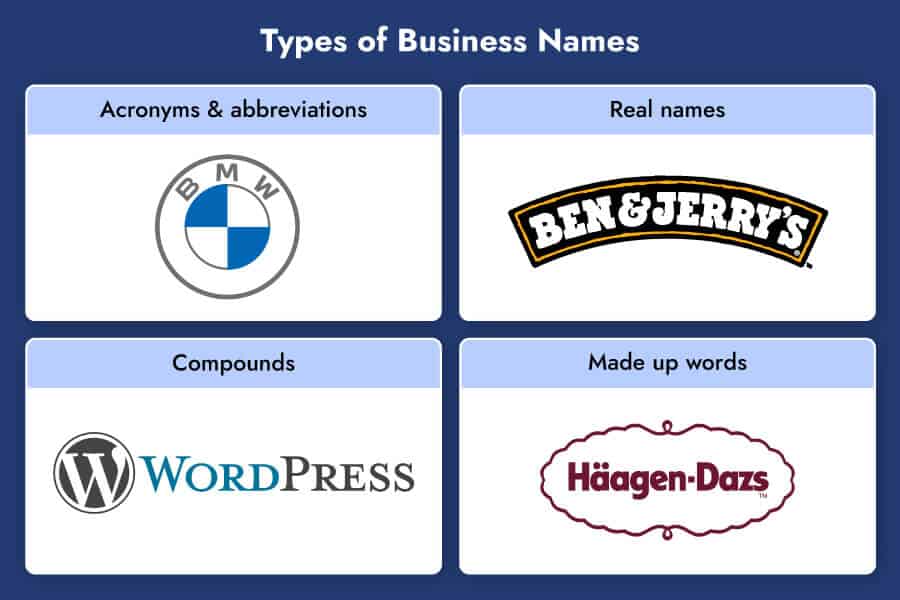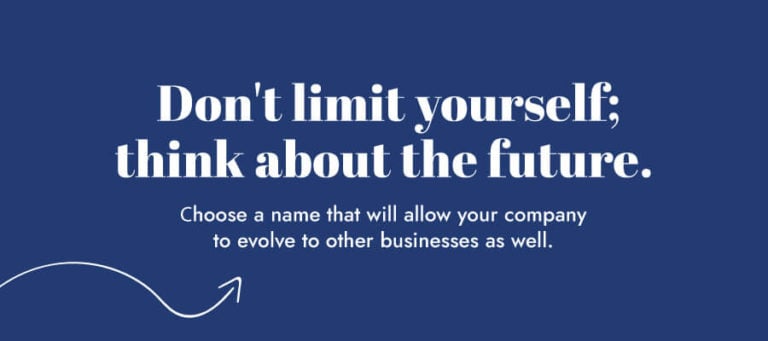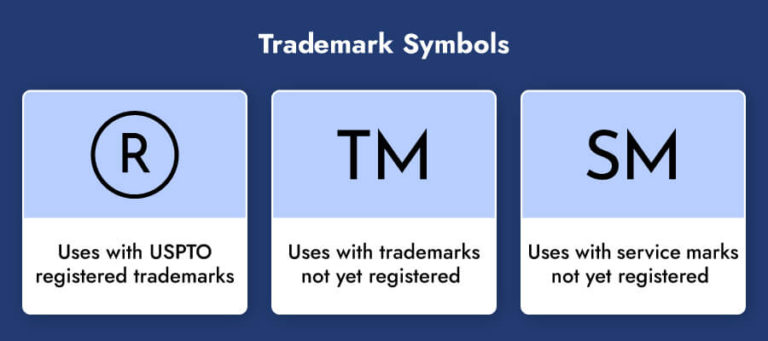
As a kid growing up in Dublin, I always got a giggle from a small shop called Knobs and Knockers.
40 years later, they’re still selling door knobs and knockers, and to this day I remember their store name and laugh. And it isn’t only me!
When visiting Dublin, Fleetwood Mac and Guns N’Roses guitarist’s Mike Campbell and Slash posted pictures of the store on Instagram. Even late-night TV host Conan O’Brien tweeted it.
That’s the power of a good business name.
When it comes to choosing a name for your business, there are a few things to consider, from domain suitability to brand relevance to likeability. Times have changed since I was a kid, and today’s on and offline multi-marketing world has made coming up with a business name difficult.
But don’t worry—I’m going to walk you through the process of creating a great business name.
A great business name creates curiosity, invites people to learn more about your business, and enables expansion into other markets. It should also grow alongside your business but never go out of style.
But just how do successful business owners come up with great business names?
Perhaps they’re just smarter or luckier than us! Or they used proven strategies, which we’re going to look at now.
You know when you first see a business name and somehow it looks, sounds, and feels familiar?
It’s because the name has been carefully chosen to define the objective of the business, bridging the gap between introduction to explanation, conveying the core value proposition (AKA, the thing that makes your business stand out from the competition), and instilling trust.
Creating a business name is a combination of instinct and proven strategies. I’ll give you an example.
I own a holiday business called Sardinia Undiscovered. Whenever someone asks me about my business’s name, I’m often met with a wry smile, swiftly followed by, “I like that, great name.”
Most of the people asking are already loyal customers to an existing business of mine, which is a boutique B&B called Mountain View situated on a remote mountainside overlooking the sea. So, they’re of a particular mindset: Adventurous souls who like to step off the beaten track (in other words, my target audience).
Sardinia isn’t on the typical tourist trail, and the word ‘Undiscovered’ conjures images of untouched beaches, void of crowds, and the usual summer vacation establishments. The name instantly connects with their emotions, bridging that critical gap between introduction and explanation. Very little more needs to be said.
My holiday business isn’t located in Sardinia; it’s on a smaller island a few miles off the southwest coast of Italy called Isola di San Pietro. But by using Sardinia in my business name and domain, people are far more likely to find me in search engines. But more importantly, I’m not geographically restricted when the time comes for expansion.

The most memorable business names effortlessly roll off your tongue, like Schweppes, Häagen Dazs, and Coca-Cola, and they use different strategies to achieve it. They’re not too long or too short, and many are a single word with 3 syllables or less, such as Microsoft, Apple, and Nike.
Let’s take a look at some different types of business names:
Many major corporations and organizations use acronyms and abbreviations in place of their full name.
So, if your business name is Chris Flooring Company, you could consider using CFC.
Now, why should you do this? You do it because shorter business names are easier to say, more memorable, and suitable for multiple marketing strategies.
And if a phrase or word is vital to you, you can also use that in your business name. Take Transed, for example, a company that provides transportation for the elderly and disabled. The word ‘transport’ is essential to their business identity.
But what if you want to use your name? No problem.
After all, it’s your business, so why not use your name?
Numerous well-known businesses use the founder’s name. Just take Walt Disney, David Abercrombie and Ezra Fitch, and Ben Cohen and Jerry Greenfield, to name a few.
However, this strategy can reduce your ability to expand into other markets. So, give it thought before putting your name on your business.
Compound business names join 2 words together. This is a popular choice because of the endless creative combinations. Most often, each word’s descriptive of what the business offers, or at the very least, provide relevant context.
3 well-known examples of compound business names are YouTube, Facebook, and WordPress.
The only drawback with compounds is they’re more prolonged than other business name creation strategies. While this can be negative in some marketplaces, it makes little difference in others.
Hands up, who thinks Häagen-Dazs is a Danish name? (Seriously, only me?) The truth is, it’s not even a real word!
Wife and husband duo, Rose and Reuben Mattus, created the business in1959. They invented the name because they wanted something exotic and felt it had an aura of old-world traditions about it, which would help their new brand stand out and get noticed.
They weren’t wrong! Häagen-Daz is one of few globally recognized brands that’s never undergone a rebrand.
Before we look at how to come up with your business name, take the following advice: Don’t overthink it; simplicity is your best policy.
For example, look at these well-known brands:
The takeaway: Your business name doesn’t have to be overly descriptive. As long as it’s vaguely relative, suggests what your business does, and passes our 10-step guide, you’re all good.
Coming up with an original, unique business name is difficult, and a lot of new business owners have struggled with it (been there, done that). Luckily, there are strategies to help you choose a name that resonates with your target audience and stand out from the crowd.
Puns are a great way to come up with names you’re not likely to forget. Here are some examples:
Online dictionaries websites like Thesaurus.com are a great resource of inspiration and finding similar words to use in your business name.
Use keyword tools such as Wordoid and Twinword to find words and ideas that relate, contain, start, or end with your target keyword.
Names that are difficult to pronounce often fail to make the grade.
For example, UCLA professor Daniel M. Oppenheimer said harder-to-pronounce names made people less likely to purchase stocks, and politicians with unusual or difficult names fared less well in the polls.
It’s because we’ve become accustomed to easy-to-understand information, and when we have difficulty pronouncing a name, it creates confusion. In other words, people say “to Hell with that” when trying to pronounce something difficult and opt for an easier alternative.
If your business name is misspelled or unpronounceable, chances are consumers might have difficulty searching for your brand.

No one knows what the future holds, but it’s important to plan for it all the same. Maybe 3 years from now you’ll expand your life coaching business to include career and relationship counseling. A future-proof business name will allow you flexibility later on.
While using industry-related terms is a good strategy, you should avoid limiting your business by making it location or product-specific.
You can future-proof your business name by avoiding the “this is what we make or offer” approach. Instead, think about your company’s story, goals, and unique value proposition when brainstorming business name ideas.
Try asking yourself the following questions:
There is no better time to prepare for the future than the present!
Brainstorming opens your mind to new ideas by using real-life examples, exploring technical terms, asking friends, and using business name generator tools.
Start by thinking about your brand voice and personality. What do you want it to look and sound like? And how do you want viewers to think and feel when they see your name?
Here are some ways to start coming up with your business name:
Business name generator tools are an excellent source of creative inspiration and very easy to use. And numerous ones are available, most offering an alternative approach to creating a business name.
Naminum – With this tool, you insert a single word related to your business, and it provides variations. It couldn’t be easier!
Panabee – Insert 2 relevant keywords and you’ll receive a list of business names, including a domain.
Anadea – Working solely online? Anadea’s tool provides catchy business names specifically for online brands.
Wordlab – Need more ideas? Wordlab provides a list of the best business name generators.
Why not use your competitors as a source of inspiration? Search online or locally and make a list of your top competitors; your objective is not to copy but to create.
Here’s how:
1. Note the most common types of business names, such as compounds, abbreviations, acronyms, made-up or real names.
2. Break them down; look for any descriptive or technical terms and phrases, specific words that relate to your brand or resonate with your target audience.
Make a list and play around with your results, conjoin different variations, listen to how they sound, test for pronunciation, typing ease, and domain use length.
OK, this isn’t exactly a proven strategy for choosing a business name. Still, it’s worth using to gain a quick and honest answer.
Choose a group of friends and tell them you’re testing business names and want an unbiased opinion. Don’t expect everyone to like your idea, but if the majority do, you might have found your business name.
Even then, your name’s not of much use if it doesn’t suit your brand.
When you create a business name, you can’t go with what just feels right; it also has to look good everywhere you use it.
Before you choose a business name, test it in your logo design to see how it looks. Place it on merchandise, create a mock-up email signature, and use it in conversation and listen to how it sounds when others say it.
Making your business name look real helps determine if it’ll suit your branding. Use our free logo maker to test yours on business cards, stationery, website, and of course, your logo.
Before you form a business entity, buy a domain, or begin marketing, take the time to conduct a thorough business name search to make sure it isn’t already being used. Doing the preliminary research will save you a lot of time and money down the line. Here’s how you can check if your business name is available:
A quick online search helps you evaluate if another company is already using your chosen business name as a domain. If your name is already in use online, it could hurt your future marketing strategies.
But just because another company owns the domain doesn’t mean the name’s trademarked or registered as a business entity. If it isn’t registered or trademarked and you want to use it, there are ways around the domain problem, and we’ll look at those in a minute.
For now, your next step is to check for business entities using your future business name.
If you’re forming an LLC or a corporation, check your Secretary of State website to ensure your business name is available and not too similar to other existing business names. If it is, you won’t be allowed to register.
Most state agency websites make this easy for you by providing an entity name check tool. But even if your name’s available, other businesses in your state could still be using it.
Not all companies trade using their business name for brand and marketing purposes.
LLC’s, partnerships, sole proprietors, and corporations can all operate using a fictitious business name, also known as a “doing business as.” Most states require these businesses to register a DBA with the city or county. You can search for registered DBAs on your state’s DBA registration website.
If a business has registered a DBA, it can affect you in 2 ways:
1. The company might have a strong brand presence in your locality, making it hard to market your new business.
2. They may have registered a trademark with the name, and trademark infringement is something you want to avoid at all costs.
When checking your business name’s availability, always run a trademark search. Start by logging onto the USPTO.gov database, then search for names that are exactly like or similar to yours.
If your choice of a business name isn’t trademarked or taken as a DBA, registering a domain is next.
Odds are you will want to own a domain, because as Bill Gates said, “If you’re not online, you’re not in business.”
And it’s a simple process. Numerous websites, such as GoDaddy, Name Checkr, or Name Check, will tell you whether your name’s available as a domain in seconds. And as I said a little earlier, if .com isn’t free, we have some strategies to get around it in tip 7.
Most successful businesses have a social media presence. It’s why you should ensure your business name is available on your chosen social platforms. The more places you use your business name, the quicker consumers will learn about your business.
Namechk is a free website you can use to see if your names are available on numerous social media channels.
Okay, imagine the following scenario: You’ve created the perfect business name, registered your entity, and even bought a trademark, but you’ve got a problem, the .com domain isn’t available. Yikes!
Do you have to start all over again? Fortunately, no. I’ll explain why next:
Whether you’re a local brick-and-mortar store or global e-commerce business, your domain name is almost as important as your business name. It’s because 85% of consumers research a company online before using it, and your domain plays an essential role in your SEO campaigns. In other words, whether your business listing ranks on page one or page 10 of Google.
When choosing your domain, you’ve got to take what’s called a navigational search into consideration. It’s the traffic you receive when people search your business name, and that’s why it’s crucial to try and use it as your URL.
And of course, a Top-Level Domain like .com is your first choice. But if your business name isn’t available as a .com, here are some excellent alternatives you can use.
Using a verb in a name is a popular method for obtaining an already taken .com domain. This technique has 2 significant benefits.
First, you get to use your business name in your URL. And second, you don’t have to use less popular TLDs.Verbs like “try” and “get” are popular choices when using this strategy. For example, Cotton Candy children’s fashion store uses www.getcottoncandy.com.
Extend your business in the URL
Even global brands can have problems in acquiring a .com domain. Take Tesla, for example. Up until 2016, Tesla didn’t own Tesla.com because someone else owned it. How did they get around this? They used TeslaMotor.com instead. They could use that URL because the noun “motor” was relevant to their brand.
But there’s a catch!
You can’t use any old word to extend your business name; you need a natural extension that says something positive about your business without sacrificing meaning or memorability.
Okay, this one goes against my previous advice of not locking yourself in geographically, but it can work in some cases.
Corporate giants such as Nissan use it. In 2000, Nissan tried to sue Mr. Uzi Nissan to obtain the nissan.com domain name. They lost!
Like Tesla, they opted to use .com instead of a lesser-known TLD by adding “USA” to their domain name. And www.nissanusa.com works pretty well.
Sometimes the above strategies won’t work, and you’ve got to consider using an alternative TLD when this happens.
For example:
The NYC URL has grown in popularity since its launch in 2014, with the average New Yorker each acquiring 2 addresses. And with the popularity prices are also rising, it’s not uncommon for domains that cost $30 flipping for $1,000!
One of my favorites is www.pizzayard.nyc, run by the accomplished restaurateur Massimiliano Nanni. (Hey, I love pizza!) It’s a great strategy if you provide services within a specific city with no plans of expanding out of state. And depending on your business, a country TLD could be the right way to go.
In some countries, like the United Kingdom and Germany, the country-code TLDs are just as trustworthy as a .com and work equally well. So, if you’re not in the USA, consider using your country’s TLD.

Trademarks exist to identify one brand from another and ensure other businesses don’t trade using the same name.
You can trademark to protect your intellectual property, including your business name, products, logo, and labels.
The benefit of trademarking a business name is that you ensure consumers don’t confuse another business with yours and reduce direct competition.
When you register your business with the United States Patent and Trademark Office (USPTO), you can use the (®) trademark symbol, and your trademark generally lasts 10 years.
Use the USPTO.gov website to see if your business name is available as a trademark. USPTO also provides you with any additional information, such as existing trademarks and the application process.
But what if you’re not ready to trademark or can’t afford it right now? (It can cost $600 plus legal fees!) No worries, allow me to explain:
If you’re not ready to register a trademark, you can reserve one by filing an intent-to-use (ITU) application.
An ITU trademark application only allows you to register a trademark (name) not yet used in commerce. And it’s cheaper than a trademark registration, typically costing around $275 per class.
But before you go to any expense, you should test your business name!
Testing your business name is crucial to obtain feedback and gauge how well it will do in the real world.
I’ve chosen the top 3 business name test strategies to help you do it.
If you’ve got more than one business name in mind, A/B testing is a sure-fire way of establishing which one consumers will like most. A/B testing is an experiment in which 2 or more versions of a variable (your business name) are shown to different people to determine which version is the best.
How to use this technique:
1. Choose a group of at least 20 people who closely resemble your target audience. A mix of family, friends, work colleagues, or agreeable strangers.
2. Split your group in 2, show one-half your business name and ask them to pronounce it. Tell it to the other half and ask them to spell it. Then swap them around and repeat.
3. Do it with all your business names and note which name your test group gets right the most.
4. And you can go a step further and ask them to provide their thoughts on each name relative to the industry it serves.
Who better than your target audience to help you choose the perfect business name?
All you do is create identical landing pages but with your different business names and use Facebook or Google Ads to run targeted traffic to them and track the number of visitors. The landing page with the most hits wins.
While this step does require a small investment of money ($50-$150), time, and some landing page development skills, it’s a great way to accurately assess which business name resonates most with your target audience.
If you’re only operating in your own country, this step might not be necessary. However, if you’re working globally, it’s essential.
The purpose of linguistic screening is to eliminate the possibility of using a business name that has unintended meanings or is derogatory in another language. It’s happened before and you definitely don’t want it to happen to you!
You can employ linguistic screening service providers who’ll use native speakers from each country to check your business name. But if that’s beyond your budget, use Google Translate or do a general search.
After all the testing is done and other people’s opinions have been taken into consideration, the one person who has to love your new business name is you. You need to say it with confidence, love hearing it, and seeing it on screen.
Because if you don’t, you might have to rebrand in the future, which costs money and could damage your brand’s reputation, and SEO rankings.
But if you follow our tips, that won’t happen.
Remember when you didn’t know how to come up with a business name, felt stuck, and maybe even a little overwhelmed? Now you can put that behind you.
Brainstorm with others, use name generators, check for availability and register, think about the future, and definitely play around with our logo design tool.
Take our advice and follow the 10 tips we’ve covered in this guide to create a business name that you love.
This portion of our website is for informational purposes only. Tailor Brands is not a law firm, and none of the information on this website constitutes or is intended to convey legal advice. All statements, opinions, recommendations, and conclusions are solely the expression of the author and provided on an as-is basis. Accordingly, Tailor Brands is not responsible for the information and/or its accuracy or completeness. It also does not indicate any affiliation between Tailor Brands and any other brands, services or logos.
Products
Resources
@2024 Copyright Tailor Brands